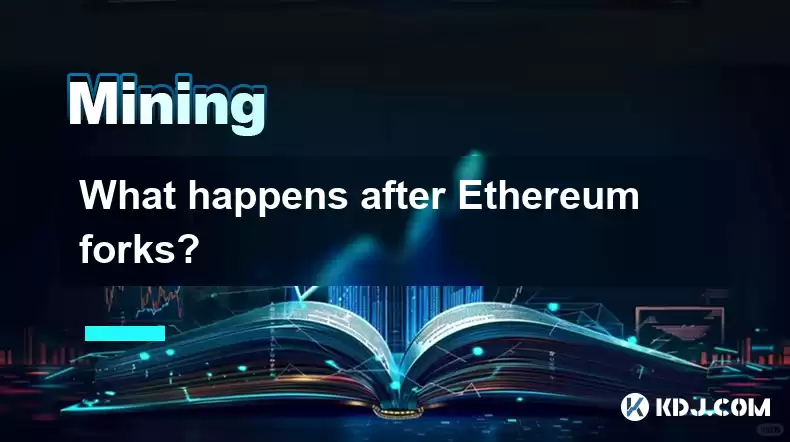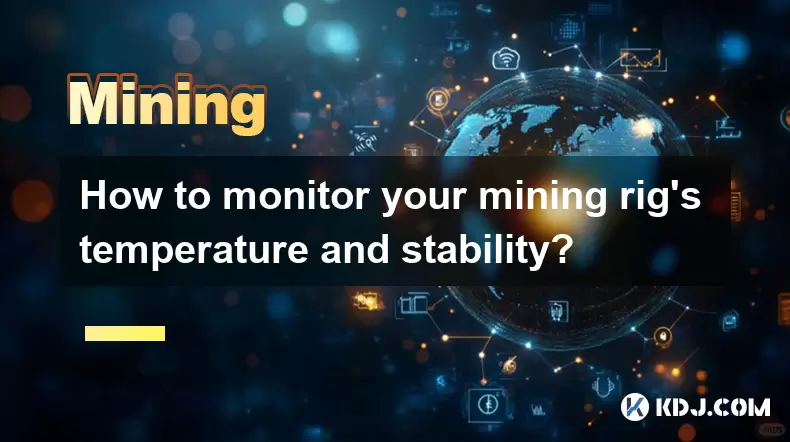-
 Bitcoin
Bitcoin $116400
-0.36% -
 Ethereum
Ethereum $4033
3.40% -
 XRP
XRP $3.302
-1.26% -
 Tether USDt
Tether USDt $1.000
-0.02% -
 BNB
BNB $796.1
1.67% -
 Solana
Solana $177.8
1.89% -
 USDC
USDC $0.9999
0.00% -
 Dogecoin
Dogecoin $0.2314
4.09% -
 TRON
TRON $0.3381
0.14% -
 Cardano
Cardano $0.7989
1.22% -
 Stellar
Stellar $0.4496
-1.84% -
 Chainlink
Chainlink $20.42
9.42% -
 Hyperliquid
Hyperliquid $41.17
0.88% -
 Sui
Sui $3.914
3.77% -
 Bitcoin Cash
Bitcoin Cash $584.7
1.52% -
 Hedera
Hedera $0.2632
-0.54% -
 Avalanche
Avalanche $24.09
3.40% -
 Ethena USDe
Ethena USDe $1.001
-0.02% -
 Litecoin
Litecoin $123.2
1.33% -
 Toncoin
Toncoin $3.318
-0.04% -
 UNUS SED LEO
UNUS SED LEO $8.984
-0.05% -
 Shiba Inu
Shiba Inu $0.00001323
2.85% -
 Uniswap
Uniswap $10.90
4.41% -
 Polkadot
Polkadot $3.999
3.34% -
 Dai
Dai $1.000
0.01% -
 Cronos
Cronos $0.1630
9.64% -
 Bitget Token
Bitget Token $4.484
0.82% -
 Monero
Monero $272.4
2.44% -
 Pepe
Pepe $0.00001173
6.03% -
 Aave
Aave $290.8
2.88%
What happens after Ethereum forks?
Ethereum forks can have significant implications for the ecosystem, including network splits, token distribution changes, altered smart contract functionality, and security vulnerabilities, requiring users to take steps to secure their funds, review smart contracts, monitor updates, and choose a chain to support in the case of a chain split.
Feb 25, 2025 at 04:37 am

Key Points:
- Overview of Ethereum Forks
- Potential Impacts on Ethereum Ecosystem
- Steps to Take After an Ethereum Fork
- Frequently Asked Questions (FAQs)
What Happens After Ethereum Forks?
Ethereum forks are significant events that can have major implications for the Ethereum ecosystem. A fork occurs when a new version of the Ethereum blockchain is created, typically due to changes in the underlying technology or consensus mechanisms.
Potential Impacts on Ethereum Ecosystem
Ethereum forks can have various impacts on the ecosystem, including:
- Network Split: A fork can result in a split of the Ethereum network, creating two separate chains with their own transaction histories and sets of rules.
- Token Distribution: The distribution of tokens on the forked chains can vary depending on the type of fork and the specific implementation.
- Smart Contract Functionality: Forks can affect the functionality of smart contracts deployed on the Ethereum network, as the rules governing their execution may change.
- Security Implications: Forks can introduce new security vulnerabilities or remove existing ones, requiring users and developers to take appropriate measures to mitigate potential risks.
Steps to Take After an Ethereum Fork
After an Ethereum fork occurs, it is essential to take the following steps:
- Identify the Fork: Determine the nature of the fork (hard fork, soft fork, or chain split) and the specific changes introduced.
- Secure Your Funds: Move or withdraw your ETH and tokens to secure storage or exchanges that support the forked chain(s).
- Review Smart Contracts: Examine the potential impact of the fork on your smart contracts and make necessary adjustments or migrations if needed.
- Monitor Communication: Stay informed through official sources and community announcements about the fork and its implications.
- Choose a Chain: In the case of a chain split, decide which chain to support and coordinate with your preferred exchanges and custodians.
FAQs:
- What is a hard fork?
A hard fork is a change to the Ethereum blockchain that requires all nodes to upgrade to continue operating on the same network. - What is a soft fork?
A soft fork is a change that is backward-compatible, allowing nodes running older versions of the software to continue operating while still enforcing the new rules. - What is a chain split?
A chain split occurs when two distinct versions of the Ethereum blockchain coexist, each with its own transaction history and set of rules. - What happens to tokens on a forked chain?
The distribution of tokens on forked chains depends on the specific implementation and the existence of replay protection measures. - How can I protect myself during a fork?
Secure your funds, review smart contracts, monitor official communication, and choose a chain to support, if necessary. - How frequent are Ethereum forks?
The frequency of Ethereum forks varies depending on the rate of technological innovation and the need for security or functionality improvements. - What are the risks associated with Ethereum forks?
Network splits, token distribution issues, smart contract vulnerabilities, and security risks can arise during forks.
Disclaimer:info@kdj.com
The information provided is not trading advice. kdj.com does not assume any responsibility for any investments made based on the information provided in this article. Cryptocurrencies are highly volatile and it is highly recommended that you invest with caution after thorough research!
If you believe that the content used on this website infringes your copyright, please contact us immediately (info@kdj.com) and we will delete it promptly.
- Decentralized Data: Taking the Driver's Seat in the Data Economy
- 2025-08-09 14:30:11
- Bitcoin vs. Gold: The Store-of-Value Showdown in the Digital Age
- 2025-08-09 14:30:11
- BlockDAG, Stellar, and Crypto Adoption: Navigating the Hype
- 2025-08-09 14:50:12
- Litecoin Price Surge: Riding the Wave of Institutional Interest and ETF Hopes
- 2025-08-09 14:50:12
- Chainlink's Wild Ride: Whales Are Still Loading Up on LINK!
- 2025-08-09 15:10:11
- Ruvi AI: Solana's New Challenger Dominating Token Sales with AI Innovation
- 2025-08-09 14:55:15
Related knowledge

What is "proof-of-work" and how does it relate to mining?
Aug 07,2025 at 02:03pm
Understanding the Concept of Proof-of-WorkProof-of-work (PoW) is a consensus mechanism used in blockchain networks to validate transactions and secure...

What are the differences between mining on Windows vs. Linux?
Aug 06,2025 at 11:29pm
Overview of Cryptocurrency Mining PlatformsCryptocurrency mining involves using computational power to solve complex cryptographic puzzles and validat...

How to use an old computer for cryptocurrency mining?
Aug 07,2025 at 12:42pm
Understanding the Feasibility of Using an Old Computer for MiningUsing an old computer for cryptocurrency mining may seem outdated, but it is still te...

Can you mine cryptocurrency using solar power?
Aug 07,2025 at 12:00am
Understanding the Basics of Cryptocurrency MiningCryptocurrency mining involves validating transactions on a blockchain network by solving complex cry...

How to monitor your mining rig's temperature and stability?
Aug 09,2025 at 09:43am
Understanding the Importance of Temperature Monitoring in Mining RigsMaintaining optimal temperature levels in a mining rig is essential for long-term...

How to build a mining rig inside a PC case?
Aug 06,2025 at 11:01pm
Understanding the Basics of a Mining Rig in a PC CaseBuilding a mining rig inside a PC case involves transforming a standard computer chassis into a d...

What is "proof-of-work" and how does it relate to mining?
Aug 07,2025 at 02:03pm
Understanding the Concept of Proof-of-WorkProof-of-work (PoW) is a consensus mechanism used in blockchain networks to validate transactions and secure...

What are the differences between mining on Windows vs. Linux?
Aug 06,2025 at 11:29pm
Overview of Cryptocurrency Mining PlatformsCryptocurrency mining involves using computational power to solve complex cryptographic puzzles and validat...

How to use an old computer for cryptocurrency mining?
Aug 07,2025 at 12:42pm
Understanding the Feasibility of Using an Old Computer for MiningUsing an old computer for cryptocurrency mining may seem outdated, but it is still te...

Can you mine cryptocurrency using solar power?
Aug 07,2025 at 12:00am
Understanding the Basics of Cryptocurrency MiningCryptocurrency mining involves validating transactions on a blockchain network by solving complex cry...

How to monitor your mining rig's temperature and stability?
Aug 09,2025 at 09:43am
Understanding the Importance of Temperature Monitoring in Mining RigsMaintaining optimal temperature levels in a mining rig is essential for long-term...

How to build a mining rig inside a PC case?
Aug 06,2025 at 11:01pm
Understanding the Basics of a Mining Rig in a PC CaseBuilding a mining rig inside a PC case involves transforming a standard computer chassis into a d...
See all articles

























































































